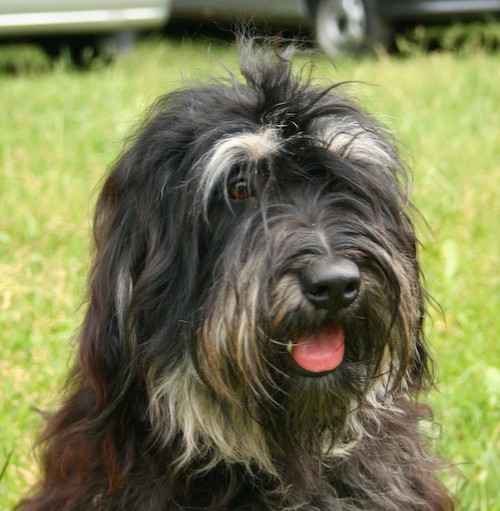
There are twenty-three species of macaques that live throughout Asia and North Africa; they are also found in Gibraltar situated on the southern tip of the Iberian Peninsula which is divided between Spain and Portugal. These mostly fruit-loving critters are the most widespread primate genus aside from humans; they’re gregarious and matriarchal, and some of them are very hairy.
A hairy face and lively spirit may be why the Portuguese Sheepdog is affectionately called the cão macaco or “monkey dog” in Portugal, its country of origin. Of the thirteen breeds native to the country, it is one of three breeds that herds.
The dogs are descended from two Briards imported into Portugal in the early 1900s by the Conde de Castro Guimarães to herd his flocks of sheep. Good herding dogs, Briards, however, were not well suited to work in the harsh and barren terrain of Portugal or in its climate. In the spirit of “building a better mousetrap,” Guimarães crossed the Briards with Pyrenean Sheepdogs and possibly Catalan Sheepdogs. What he got was a dog that didn’t have a mat prone undercoat that made it better suited to work in the heat and didn’t get caught in vegetation. By the end of the 1920s, Guimarães’ new sheepherder was well known in its native mountainous home and adjacent regions.
In 1932, the Portuguese Kennel Club granted the breed full recognition using the standard written by Dr. Antonio Cabral and Dr. Felipe Morgado Romeiros. By the 1970s, however, the breed was in trouble. Land was getting urbanized, and technology was changing the nature of agriculture. The breed was on the verge of vanishing.
Happily, fans of the breed coalesced to save the breed. In the 80s, fanciers bred the dogs to be more of a companion dog which is how it got “found” by Portuguese suburbanites. The FCI finally formally recognized the breed in 1996, and in 2006, the breed was recognised by the United Kennel Club. It is currently part of the AKC’s Foundation Stock Service.
Image: By Pleple2000 is licensed under CC BY-SA 3.0
